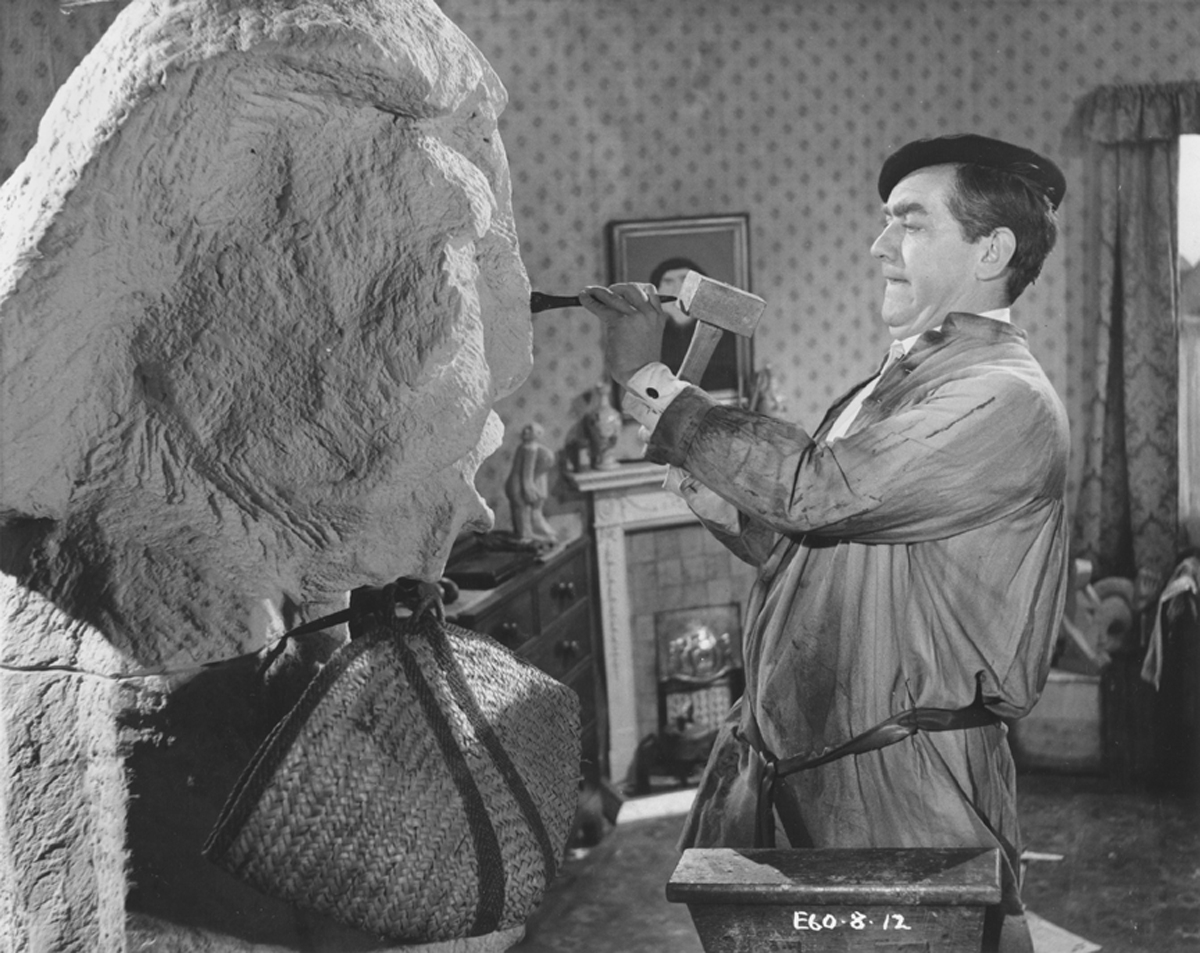Most people in the artworld have at some point found themselves discussing Ray Galton and Alan Simpson’s 1960 movie The Rebel, directed by Robert Day and starring tony Hancock as Anthony Hancock, an office worker trapped in the soulless daily grind of the suburban commuter. His secret passion is art; out of hours, beret on, he turns his flat into a studio in which a host of genre catastrophes take place, among them still-lifes, portraits and stone carvings, much to the consternation of his landlady, Mrs Crevatte.
In the face of derision, he flees to Paris seeking artistic credibility and the appreciation of like minds. Success comes quickly, but only as a result of a farcical mix-up in which the works of his talented studiomate, Paul Ashby, get taken for Hancock’s, propelling the wrong artist to stardom and a life of luxury. As a bang-to-bust portrait of the absurdities of the lifestyle of the successful artist, the movie stands as one of the best-loved shibboleths of the art community – most artists I know can recite tracts of dialogue from the film verbatim, and have fond recollections of Hancock’s fantastically wretched works.
the movie stands as one of the best-loved shibboleths of the art community
The paintings for the film were executed by artist Alistair Grant in 1958, when he was a young printmaking tutor at London’s Royal College of Art. Grant’s brief was to produce three distinct groups of paintings: Hancock’s ‘infantile’ works, the dour figuration of (early) Ashby that catches the art critic’s eye and finally Ashby’s later, mature works made under the influence of Hancock’s infantile style.
It’s tempting to think of Grant’s Hancock paintings as informed by the critical spirit of art brut or CoBrA artists – their shared faith in automatic painting, the art of children and the primacy of truth and rebellion, etc. Not so: the works were ignorantly commissioned, as Alistair o’Neill writes in an essay in Design and Popular Entertainment (2009), the scriptwriters describing the required daubs in the language of media art suspicion, with reference to such ‘laughing stocks’ as Picasso and Epstein. And while the unremarkable academic studies of early Ashby were made to a similarly art-illiterate brief, the curveball comes in the final group, those made by Ashby after absorbing Hancock’s infantilist mantras. These were taken directly from a show of Grant’s work at Zwemmer Gallery, London.
The art was taken directly from a show of Alistair Grant’s work at Zwemmer Gallery, London.
In contributing all three bodies of work, Grant staged a microsatire within the larger whole of the film’s reactionary subtext, renegotiating outmoded notions of content and imagery – ducks, street scenes, portraits, etc – from the standpoint of Grant’s modernist conception of abstract painting. While the film acknowledges abstraction as the (ridiculed) elite visual language of the time, the framing of Grant’s ‘real’ works as the triumphs had the artist working against his own achievements when making the Hancock pieces. And by allowing his ‘real’ work to be used in a narrative about the foolishness of contemporary art, Grant pitted his work against these fictional dabblings.
Polarised as two sides of one bad idea (art), the two styles adjacently staged the then-current debate on the progressive claims of painterly Modernism in the art-sceptical context of the film. And the results are ironically clear: there are not many people who remember the ‘good’ paintings at the end of the film over the ‘bad’ ones at the beginning.
In an odd way, this represents the second farcical mix-up of the film – the gravitas of the Grant-Ashby show has been entirely supplanted by the sheer comic power of the crazy Hancock pictures, visiting a strange kind of posthumous ‘success’ on the character of Anthony Hancock and, perversely, uncomfortably, on Grant. The effect of knowing that all works were made by Grant leads one to suppose, as an artist, that his foray into the imaginary painterly vision of Anthony Hancock afforded him a kind of joyous release from the pressures of his own maturing and rigorous pictorial language. And it’s for this reason, perhaps, that the dud paintings hold so much more ongoing power over artists than the ‘good’ paintings – they represent not good painting, but a fantasy of letting go, winging it, having fun for its own sake. that’s why, on watching the film today, we can still imagine Grant, who died in 1997, chuckling with glee as he put the finishing touches to Ducks in Flight Around the Eiffel Tower. If you’ve ‘never seen beetroot-coloured ducks before’, then look no further.
